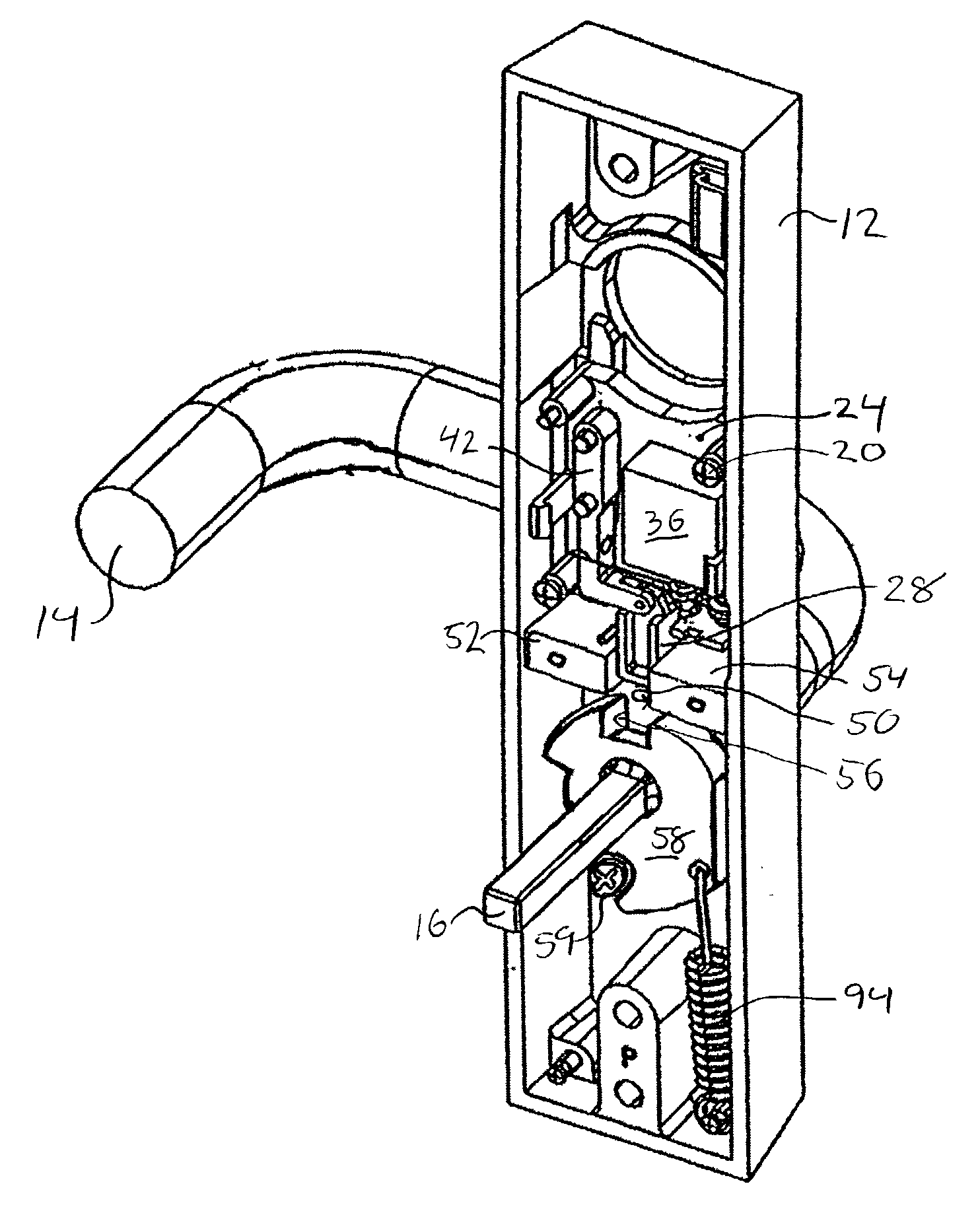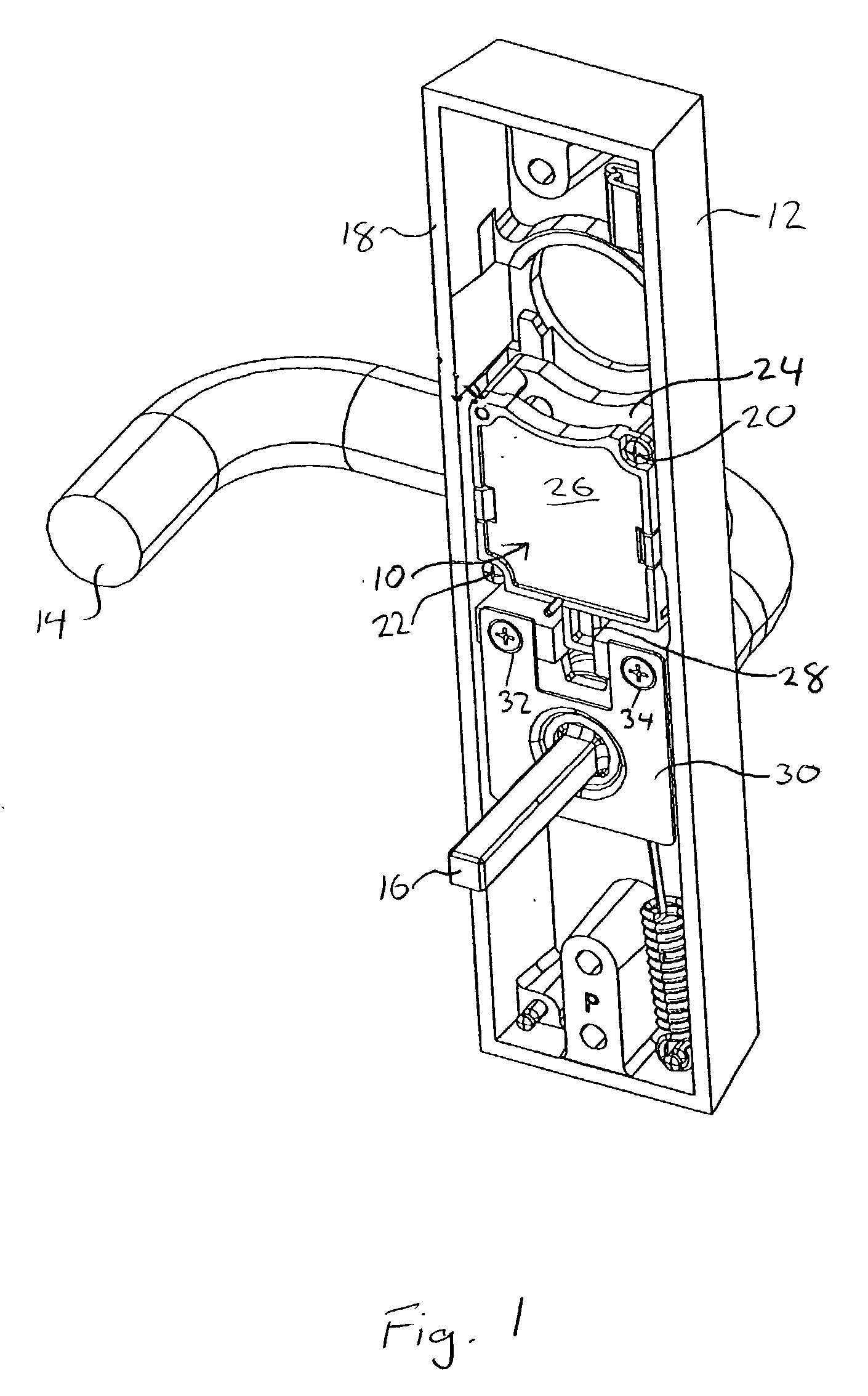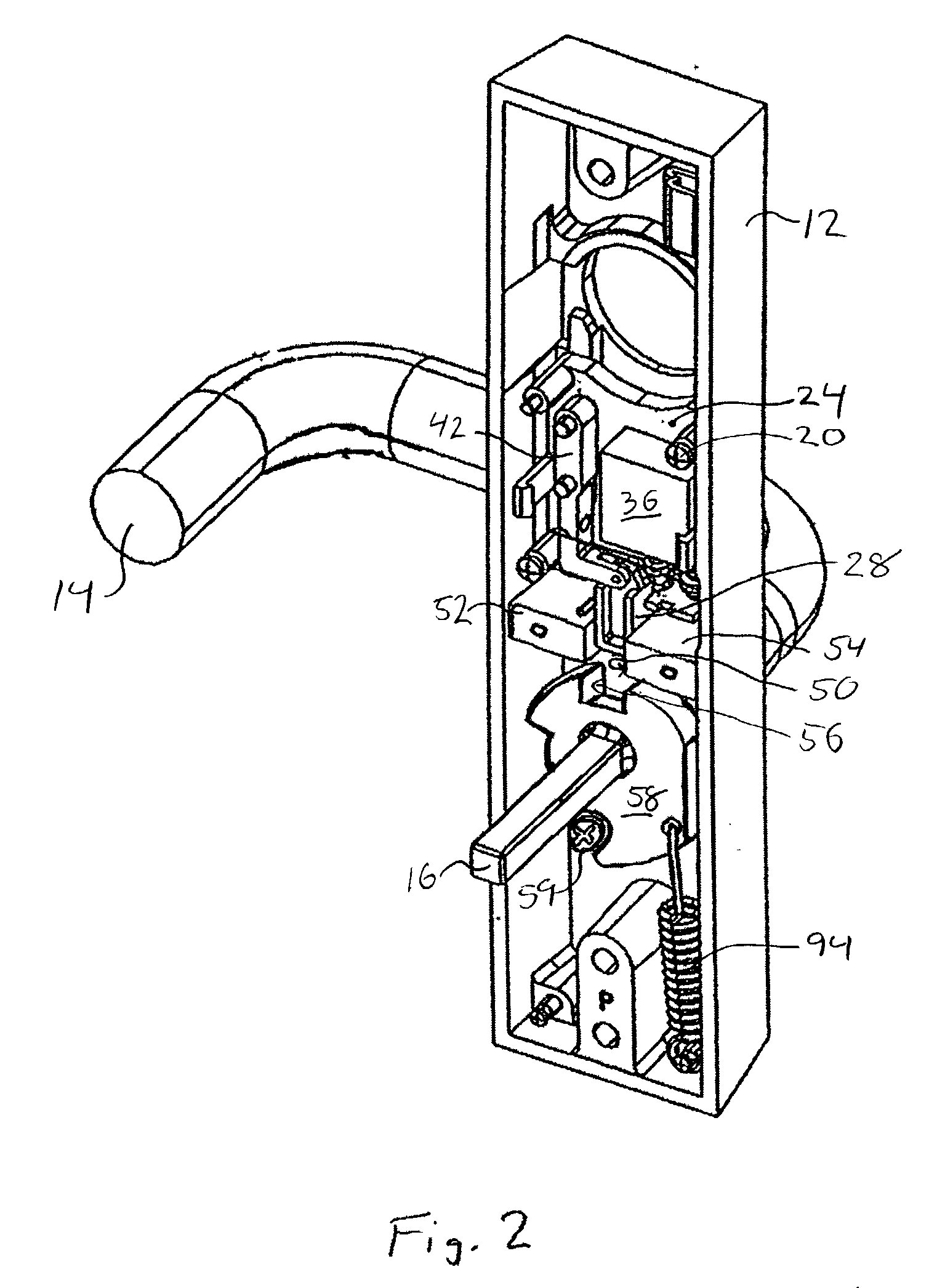Motorized locking mechanism
- Summary
- Abstract
- Description
- Claims
- Application Information
AI Technical Summary
Benefits of technology
Problems solved by technology
Method used
Image
Examples
Embodiment Construction
)
[0032] In describing the preferred embodiment of the present invention, reference will be made herein to FIGS. 1-4 of the drawings in which like numerals refer to like features of the invention.
[0033] Referring to FIG. 1, a motorized locking mechanism 10 according to the present invention is installed within an exit trim housing 12. The exit trim includes a lever handle 14 that rotates a spindle 16 to operate an exit device. The exit trim is installed on the outer side of the exit door with perimeter edge surface 18 flush against the door. The spindle 16 extends through the exit door and into a conventional exit device (not shown) installed directly opposite the trim housing 12 on the inner side of the exit door.
[0034] All of the components of the locking mechanism 10 are ultimately mounted to or supported by a frame 24 and its removable front cover 26. The complete locking mechanism can be removed as a modular unit from the housing 12 and replaced by removing two mounting screws 2...
PUM
 Login to View More
Login to View More Abstract
Description
Claims
Application Information
 Login to View More
Login to View More - R&D
- Intellectual Property
- Life Sciences
- Materials
- Tech Scout
- Unparalleled Data Quality
- Higher Quality Content
- 60% Fewer Hallucinations
Browse by: Latest US Patents, China's latest patents, Technical Efficacy Thesaurus, Application Domain, Technology Topic, Popular Technical Reports.
© 2025 PatSnap. All rights reserved.Legal|Privacy policy|Modern Slavery Act Transparency Statement|Sitemap|About US| Contact US: help@patsnap.com



